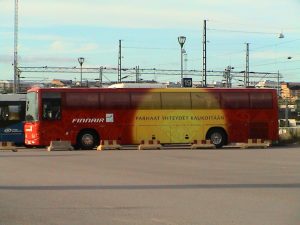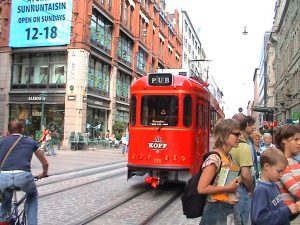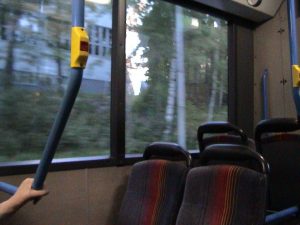IAAF World Athletics Championships in Helsinki 11
This was one of the events responsible for a lot of personal misery to me (and my colleagues) unfortunately. No, I am not a sports fanatic at all. But it’s strange to note, how such external factors do affect us still. I had to arrange for an apartment for myself within the first 3 weeks of arriving in Finland. We had been told it’s not really difficult. But when we started searching, we were just not able to get *any* apartment available in the time period that we wanted. Even though the time period was supposedly the best, since in summers, a lot of apartments get vacant as the majority of the population goes off to a summer cottage, we faced major problems in finalising an apartment. Whatever little was available was at greatly hiked prices. I remember one chap was renting out his place only for the week in which the IAAF World Championships had to take place in Helsinki and he expected 2000€ for it! Outrageous by any real estate standards! Well the woes can make up a long post in themselves maybe later.
For now, the world championships are taking place out here. Helsinki is all geared up for the event. As can be expected, there is much fanfare, tourist friendly schemes, escalation in real estate and a good business opportunity for people. Suddenly there is a major influx of ‘foreigners’ in the local transport and on the streets. It feels good to be not the only ones, who do not unders tand Finnish/Swedish. Initially we thought that India isn’t taking part in these events as there was just no information anywhere in the Indian media (on the net). Finally on visiting the venue, we managed to spot the Indian flag and later we learnt that Anju Bobby George was taking part in the long jump event (She had won the bronze in the same games held in Paris in 2003). She stood 5th in the event this year inspite of the bad weather. (Later she would get upgraded to Gold medalist status due to other winners being disqualified) The weather conditions were *really* bad for the past few days and literally dampened our plans to watch this event. So far, I have not been able to watch the event. But will surely try to, in the 2 more days that the event is on. Even if India wasn’t participating we all would have loved to use this opportunity to make a first, as far as watching a sports event in a stadium is concerned.
tand Finnish/Swedish. Initially we thought that India isn’t taking part in these events as there was just no information anywhere in the Indian media (on the net). Finally on visiting the venue, we managed to spot the Indian flag and later we learnt that Anju Bobby George was taking part in the long jump event (She had won the bronze in the same games held in Paris in 2003). She stood 5th in the event this year inspite of the bad weather. (Later she would get upgraded to Gold medalist status due to other winners being disqualified) The weather conditions were *really* bad for the past few days and literally dampened our plans to watch this event. So far, I have not been able to watch the event. But will surely try to, in the 2 more days that the event is on. Even if India wasn’t participating we all would have loved to use this opportunity to make a first, as far as watching a sports event in a stadium is concerned.
There are a lot of other activities which go on outside the stadium, for eg. marathons, fun games for free in which one can win prizes ranging from small badges and caps to passes of a cruise! I tried my hand at these games and collected a lot of small stuff (badges, pens, caps) but no cruises passes unfortunately. I also got my face painted with the Indian tri-colour! For once I won’t face a problem of my nationality being mistaken.


